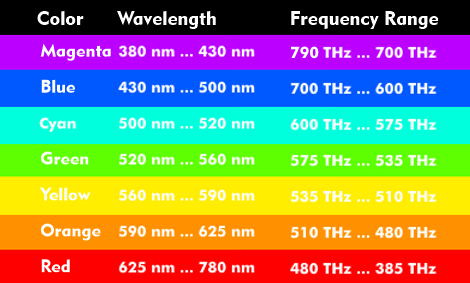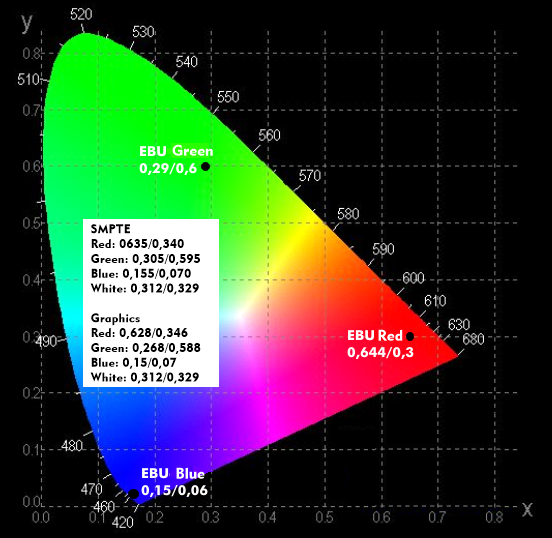red (R)
Red (R) is one of three primary colors of additive color mixing and a secondary color of subtractive color mixing. In the CIE color space, red has a wavelength between 625 nm and 780 nm, which corresponds to a frequency between 380 THz and 480 THz.
Red can have different wavelengths for additive color mixing. This is related to the requirement for the largest possible color space for additive color mixing of red, green, blue( RGB) and to the requirement that the third primary color cannot be created from two primary colors. These requirements are fulfilled by several wavelengths, but are always to be seen in connection with the other two primary colors. Thus, red can have a wavelength of 645 nm if the other two primary colors have 444 nm and 526 nm. Internationally, a wavelength of 700 nm is specified for red, 546 nm for green and 436 nm for blue.
The various color models define the color red in the CIE color space slightly differently from each other. For example, for the PAL television standard, the EBU has defined red with xy coordinates 0.62/0.34, whereas in NTSC the coordinates are 0.610/0.316. In standard RGB( sRGB), red is specified in the CIE color space with coordinates 0.6400/0.3300.
An extremely large color space like that of UHDTV requires that the three primary colors occupy extreme values in the CIE color space. For example, in the ITU recommendationBT.2020, red is specified with the coordinate values 0.708/0.292 and thus deviates considerably from the red values of other television standards.


